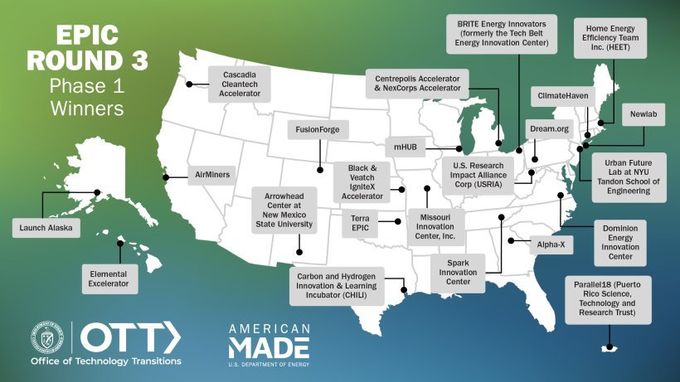Silicon Valley has been a tech startup paradise for decades. It has been described as the modern day Florence in the Renaissance. Tech gods from Apple and Google to Facebook and Twitter were born here. We can credit Silicon Valley as the birthplace for such world-changing innovations like smartphones, microprocessor chips, Tesla automation, and WIFI-enabled teapots.
Okay, so maybe that last one isn't changing the world, but it was created in the Valley and it's changed my life, for whatever that's worth. If Silicon Valley were a country, it would have the 19th-biggest economy on the planet. There's no doubt it is an engineer's dream. A techie's haven. A capitalist's utopia. A beacon of the modern world.
Or at least, it used to be.
Now leaving the Bay Area
There is an exodus in Silicon Valley. It's been happening for about three years. For instance, according to a 2018 poll conducted by the Bay Area Council, 46 percent of survey takers admit they plan to leave the Bay Area in the next year. Couple that with the fact that Silicon Valley investors have allocated 66 percent of their funds into startups outside of Silicon Valley, compared with 50 percent just six years ago, and you have a recipe for a great exodus to other markets around the country.
Now, just for kicks, add to all of this that the Kauffman Foundation's research has pegged Miami-Fort Lauderdale as the number one city in America for startup activity. Where does Silicon Valley's Bay Area, formerly the world's preeminent hub for tech startups, rank? Fourteenth. How the mighty have fallen.
So, to what exactly can this mass egress be attributed?
Insufficient funds
The biggest reason is cost.
The cost of living in the Bay Area is one of the steepest on the planet. Startups in the Valley pay four times what they would in any other city in the country. In fact, just last year the California Association of Realtors reported that a typical family in San Francisco has to make over $300,000 a year in order to afford a median-priced house tagged at just over a million dollars. That includes a 20 percent down payment and an $8,000 monthly payment. Because most of the startups in Silicon Valley are in their infancies, the engineers, programmers, and non-technical employees don't get compensated enough to afford such a living. As a result, they are leaving the Bay Area in droves for places where the cost of living is manageable.
One location that tech startup entrepreneurs are flocking to is the university. Universities are also retaining tech wunderkinds on campus to blossom their startups, rather than seeing them leave for the microprocessor motherland known as Silicon Valley.
Now entering university life
One of the biggest reasons universities have become hotbeds for tech startups is that campuses provide a means for people with multidisciplinary backgrounds to intermingle within the same space. A chemical engineering student with a great idea might meet an MBA during a startup launch party. Together they can build and market the second iteration of "Secret Stuff" from Space Jam, or whatever that student has in mind.
The point is that universities position aspiring entrepreneurs to network with the right people for building their company from the ground up. Even the Innovation Leadership Forum attests that innovation is born when different ways of thinking clash. That is precisely what happens on campuses every day.
Furthermore, college students also have more room to take risks. Most aspiring entrepreneurs in college between 18 and 25 are not married, do not have kids, mortgages, or any other major financial responsibilities. This allows them to have the luxury of leeway when it comes to experimenting and trial and error.
The ecosystem of innovation
In essence, academic incubators are courting tech entrepreneurs because universities offer an ecosystem designed to support and grow startups from conception to commercialization. This ecosystem includes a space where researchers, faculty, and students of all disciplines interact and form working relationships. In many cases, it also includes university owned equipment and laboratories for use by startup researchers.
There is, of course, incentive for universities to concentrate so many resources to building incubators and luring startup entrepreneurs. There is an inherent sense of responsibility that universities have to create an academic climate that encourages students to explore new ideas. A sense of responsibility that encourages them to take more risks; to be fearless in their quest to use their intellect to enrich lives; to dream.
Moreover, university incubators also position schools as progressive institutions. Such positioning attracts elite researchers and enhances a university's reputation. Further, these incubators forge a bridge that links industry and academia in a way that Silicon Valley does not. That's because with academic incubators, startups are a stone's throw away from a place teeming with researchers, scientists, hungry students, and aspiring entrepreneurs: the university campus.
Consequently, it is no wonder that tech startups are leaving Silicon Valley for universities. It's also no surprise that students who have graduated are staying with their university's incubators to develop their companies. There, they have a place that cultivates innovation, encourages risk-taking, and is set up specifically to help them bring their tech to the world. In short, the university has become a hub set up to be conducive to thriving tech startups. And tech entrepreneurs have noticed.
------
This article originally appeared on the University of Houston's The Big Idea.
Rene Cantu is the writer and editor at UH Division of Research.

 The DOE's OTT selections are nationwide. Photo via energy.gov
The DOE's OTT selections are nationwide. Photo via energy.gov Photo by Rome Wilkerson on Unsplash
Photo by Rome Wilkerson on Unsplash








 The 2025 Mentor of the Year will be announced on Nov. 13. Courtesy photos
The 2025 Mentor of the Year will be announced on Nov. 13. Courtesy photos


